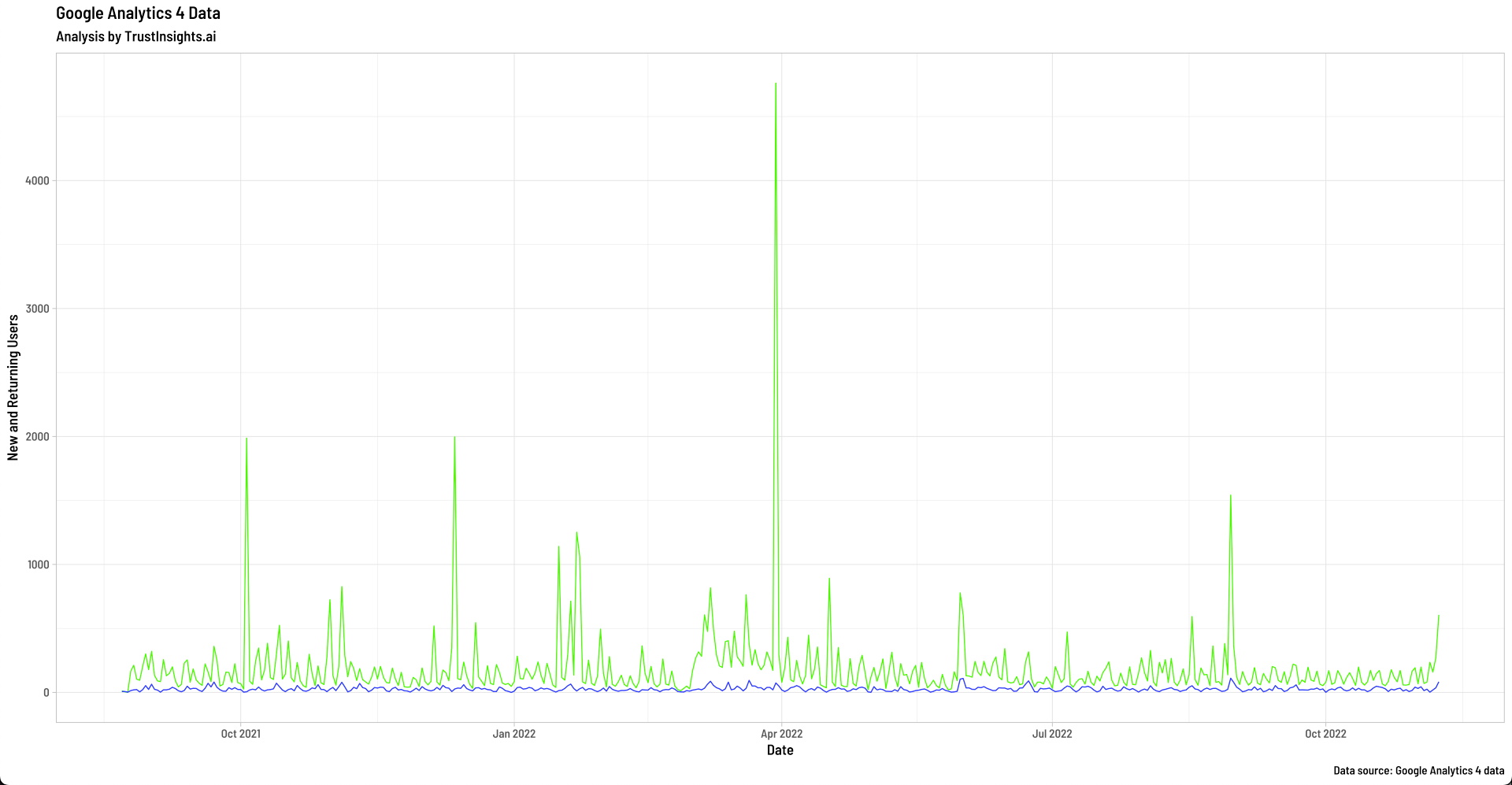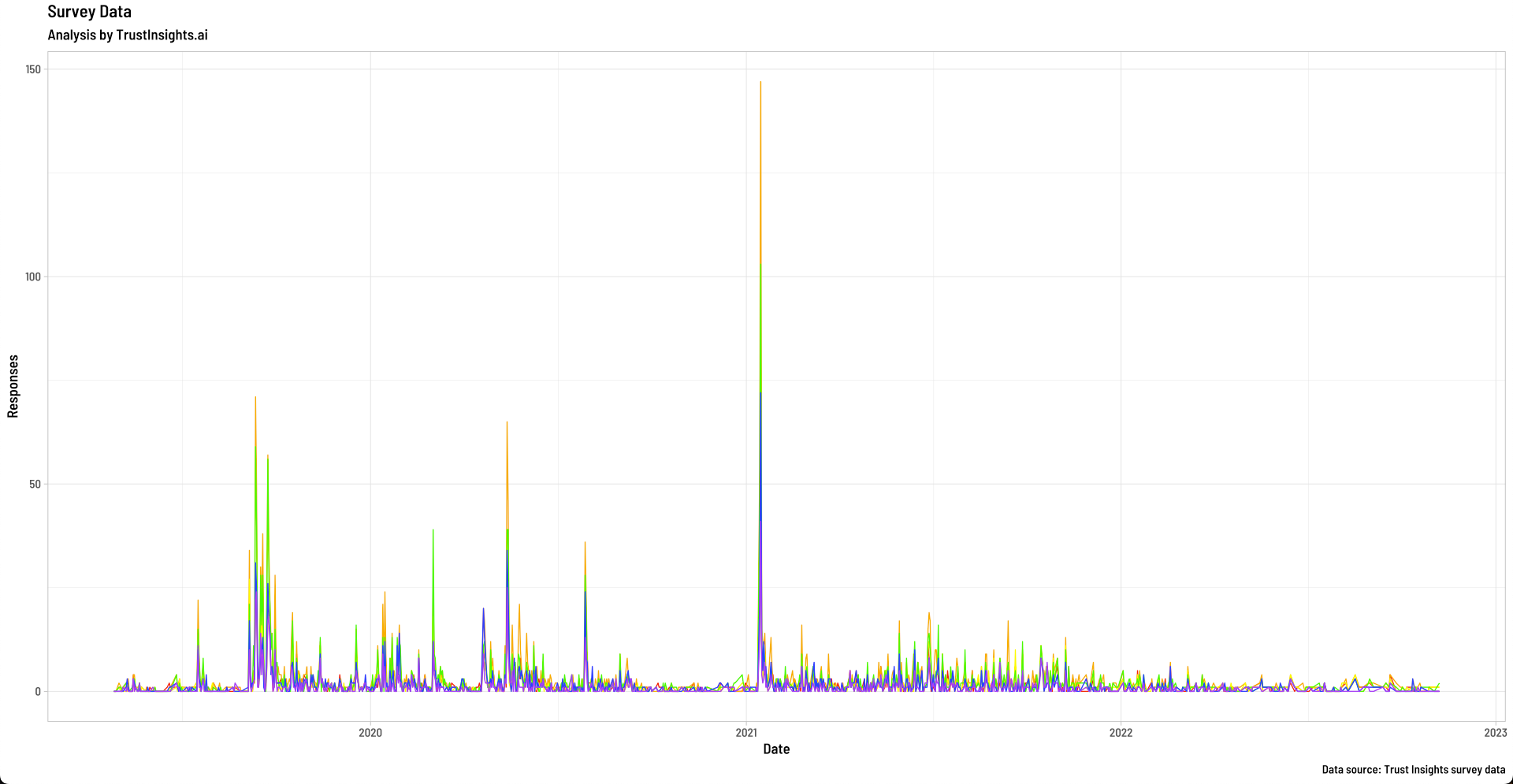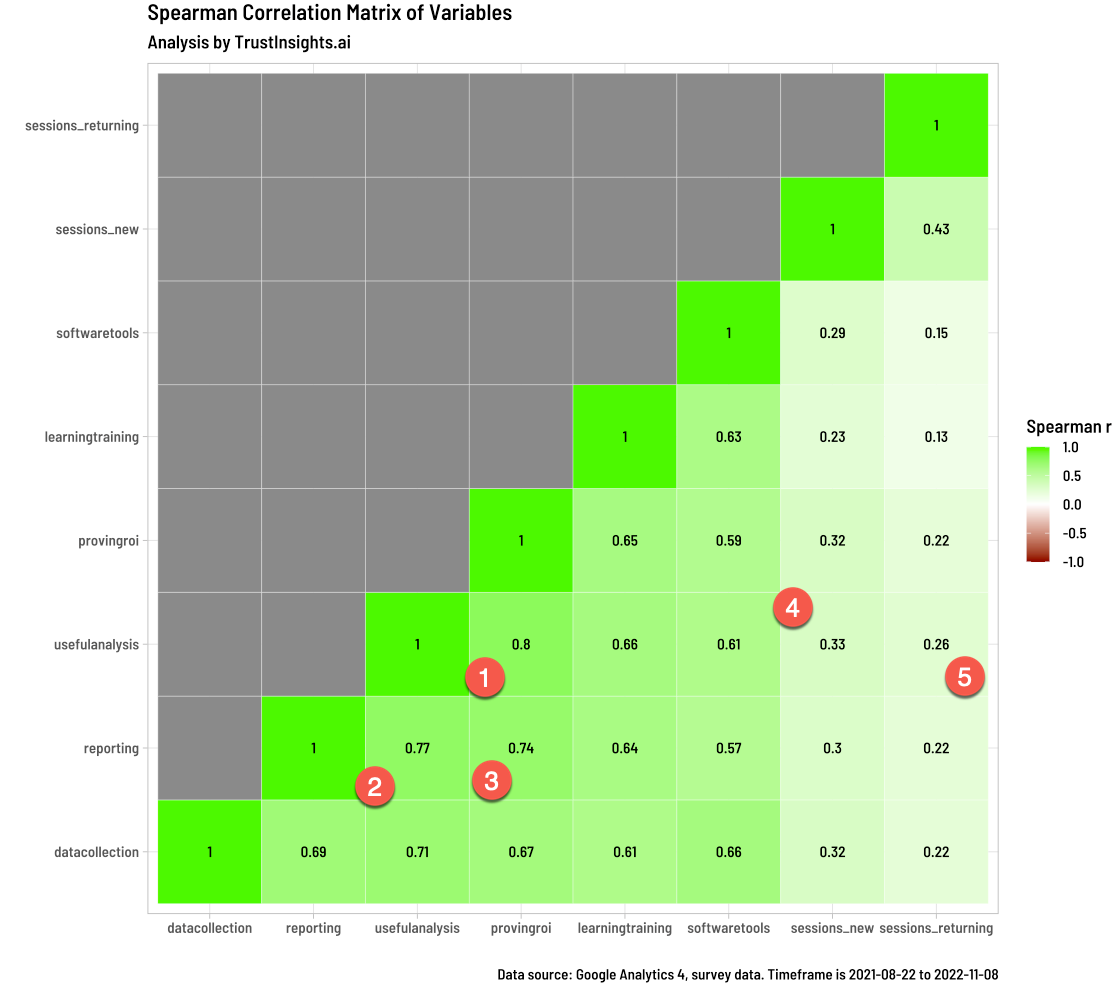INBOX INSIGHTS: Voice of the Customer (11/9) :: View in browser
👉 Download Our Free 2023 Marketing Planning Guide »
Voice of the Customer
Social media is a mess. Data privacy is getting more stringent. Budgets are getting cut left and right. How are marketers supposed to know what their audience wants and deliver content and campaigns that resonate?
In 2020, I wrote this 4 part series on the Voice of the Customer.
Today, I want to focus on part 3 – where you can get your data from.
The voice of the customer is data that represents what the customer wants, needs, and expects. Right now, too many brands are reliant on cookies and social media to try and understand their audience’s interests.
A million years ago when I was a product manager, my role focused on giving customers what they wanted in collaboration with the vision of the company stakeholders. Unfortunately, what the customers needed and what the company wanted to do did not align. When I say it did not align, what I mean is they were not even in the same orbit. My marketing team was fighting hard to create a Voice of the Customer program so that we could learn what we weren’t delivering. My stakeholders wanted to set up fancy dinners for prospects. We got too wrapped up in designing the perfect Voice of the Customer program that we lost sight of what was important, the customer. Needless to say, we never got to the root of the product issues. We also didn’t look at what was right in front of us. The data.
So, here is my gift to you. If you’re concerned about recent and upcoming changes to your Marketing TechStack and your ability to understand your customer, here is a list of alternative data sources:
- Face-to-face interviews
- Focus groups
- Market research surveys
- Observational data (watching the customer, shadowing the customer)
- Customer advisory boards
- Environmental and landscape data collection
- Conferences and trade shows
- UI/UX data collection
- Search intent data
- Sales data
- Customer support data
- Private communities
This is not an exhaustive list but it should get you started.
Here’s the thing. If you give people the information they need to consent, aka – how will we use your data – you won’t have a hard time collecting this information. You will have willing participants. You also don’t need to design an elaborate Voice of the Customer program. You simply need to start listening. And I mean really listening. This is not the time to solve problems and go in with a hard sell and solution. Listen. Let your customers and audience be heard. Give them space and time to articulate what’s going on and what they need from you.
Right now is a great time to pivot how you’re collecting audience data. Start small. Send a quick “how are we doing” email to your existing customers. Reach out to your prospects and ask them to talk to you for 10 minutes. As mentioned above – this is NOT about selling them something. Make that crystal clear when you’re asking for someone’s time. The more they trust you, the more they will open up and tell you valuable information. Do not ruin that trust by bringing your own agenda into the conversation.
If you don’t have the resources to talk to people, take a look at search intent data. How are people finding you, what queries brought them to you? Look at your audience interest data in your web analytics.
The point is that you have a lot of other options when it comes to understanding your audience. If you’re still holding out hope that public social media will be the answer, you’re already falling behind.
Are you collecting and using VOC data?
Come tell me about it in our free Slack group, Analytics for Marketers »
– Katie Robbert, CEO

Do you have a colleague or friend who needs this newsletter? Send them this link to help them get their own copy:
https://www.trustinsights.ai/newsletter

In this episode of In-Ear Insights, Katie and Chris talk about personalization and customization of content. In an era when privacy regulations are throttling data marketers can obtain and the media environment is in total chaos, how do we still manage to customize and personalize?
Watch/listen to this episode of In-Ear Insights here »
Last week on So What? The Marketing Analytics and Insights Live show, we tackled monetization models for content marketing. Catch the replay here »
This Thursday at 1 PM Eastern, we’ll be looking at Mastodon, an open-source, federated social networking service. Are you following our YouTube channel? If not, click/tap here to follow us!
Need a reminder? Click here for a calendar appointment:

Here’s some of our content from recent days that you might have missed. If you read something and enjoy it, please share it with a friend or colleague!
- How to do SEO research
- {PODCAST} In-Ear Insights: Can I Believe What I Read?
- {PODCAST} In-Ear Insights: How to Customize Content Without the Data?
- So What? Content Marketing via subscription versus advertising
- The basics of data visualization
- Using AI for content creation
- INBOX INSIGHTS, November 2, 2022: User Stories and Requirements Gathering, Direct Traffic
- Almost Timely News: A Simple Way To Test Your Design (2022-11-06)
- Talking Direct Mail w Brianne & Meagan via Marketing Over Coffee

Take your skills to the next level with our premium courses.

Get skilled up with an assortment of our free, on-demand classes.
- Empower Your Marketing with Private Social Media Communities
- How to Deliver Reports and Prove the ROI of your Agency
- Powering Up Your LinkedIn Profile (For Job Hunters)
- Competitive Social Media Analytics Strategy
- How to Prove Social Media ROI
- What, Why, How: Foundations of B2B Marketing Analytics

In this week’s Data Diaries, let’s talk about processing survey data, one of the best sources of Voice of the Customer data that Katie talked about in the opening. One of the questions we ask on our intake forms for all our forms goes like this:
What are your biggest analytics challenges right now? Check all that apply
- Data collection
- Useful/actionable analysis
- Reporting
- Proving ROI
- Learning/training
- Better software/tools
- None of these
The big question is, what do you do with this data? Obviously, looking at the raw data itself is helpful, to see how many people responded with each category, and we look at that monthly or more.
However, we shouldn’t stop there. Here’s an interesting question: are the issues that we’re asking about really what our prospective customers care about? After all, if we’re asking questions to our prospective customers that have nothing to do with what they care about, we’re wasting everyone’s time AND not getting useful insights to inform our sales and marketing, right?
It makes logical sense that if we are creating content about the topics our audience cares about that we should see some relationship between those issues and our reach with our audience. So how would we find this out? Let’s start by looking at our data. First, let’s see our Google Analytics data for new and returning users:

Next, let’s visualize our survey data:

At first glance these look similar, but the time scales are different. So let’s chop off our survey data so that it’s apples to apples with our Google Analytics data, then run a correlation between the two.

Once we’ve fixed up our data to make it match timeframes, what do we see in the results? A few noteworthy things:
- 1: The strongest correlation among our topics is useful analysis and proving ROI, which also makes intuitive sense. People who need useful analysis are also people who are probably asked to prove the ROI of what they’re doing.
- 2: The next strongest correlation is useful analysis and reporting – again, not surprising.
- 3: The third strongest correlation is reporting and proving ROI. Also intuitive.
- 4: The strongest correlation between new visits to our website and our topics is around useful analysis. Creating content around useful analysis suggests it may help increase our ability to attract new users.
- 5: The strongest correlation between returning visits to our website and our topics is also useful analysis.
Now what? As any Statistics 101 student will tell you, correlation is not causation, but it’s a hint in the right direction. Our next steps would be to examine our content overall, identify which content fits in the useful analysis bucket, and then improve or create net new content in that category – then recheck our analysis in a quarter or two. If the correlation is causative – making more useful content will attract more potential customers – then we should see these correlation numbers increase. If the correlation is not causative, then we won’t see any increase.
This is just one tiny example of using Voice of the Customer data in a practical sense. Don’t let your VOC data lay around unused – start working with it and seeing what insights it could lend in combination with your other data.

- New! Case Study: Exploratory Data Analysis and Natural Language Processing
- Case Study: Google Analytics Audit and Attribution
- Case Study: Natural Language Processing
- Case Study: SEO Audit and Competitive Strategy

Here’s a roundup of who’s hiring, based on positions shared in the Analytics for Marketers Slack group and other communities.
- Content Creator Internship at Red Shark Digital
- Copywriting Internship at Red Shark Digital
- Cro/Web Analyst at Sanoma Media Finland
- Data Analyst at NextAfter
- Data Scientist (R And Shiny Developer) at Atorus Research
- Data Tracking & Measurement Specialist at Bijenkorf
- Football Data Scientist at Manchester United
- Freelance Front End Hubspot Web Developer at CommunityCo
- Graphic Design Internship at Red Shark Digital
- Head Of Data Products at Rural Innovation Strategies
- Hubspot Developer at Bridges
- Lead Data Scientist at Nestle
- Publikanalytiker at Yle
- Regional Planning Data Analyst at Metropolitan Area Planning Council
- Senior Director, Customer Insights & Analytics at Shutterfly
- Software Engineer, Shiny at Posit
- Web Developer at Red Shark Digital

Are you a member of our free Slack group, Analytics for Marketers? Join 2800+ like-minded marketers who care about data and measuring their success. Membership is free – join today. Members also receive sneak peeks of upcoming data, credible third-party studies we find and like, and much more. Join today!

We heard you loud and clear. On Slack, in surveys, at events, you’ve said you want one thing more than anything else: Google Analytics 4 training.
We heard you, and we’ve got you covered. The new Trust Insights Google Analytics 4 For Marketers Course is the comprehensive training solution that will get you up to speed thoroughly in Google Analytics 4.
What makes this different than other training courses?
- You’ll learn how Google Tag Manager and Google Data Studio form the essential companion pieces to Google Analytics 4, and how to use them all together
- You’ll learn how marketers specifically should use Google Analytics 4, including the new Explore Hub with real world applications and use cases
- You’ll learn how to determine if a migration was done correctly, and especially what things are likely to go wrong
- You’ll even learn how to hire (or be hired) for Google Analytics 4 talent specifically, not just general Google Analytics
- And finally, you’ll learn how to rearrange Google Analytics 4’s menus to be a lot more sensible because that bothers everyone
With more than 5 hours of content across 17 lessons, plus templates, spreadsheets, transcripts, and certificates of completion, you’ll master Google Analytics 4 in ways no other course can teach you.
Click/tap here to enroll today »

Where can you find Trust Insights face-to-face?
- SMPS, November 2022, Las Vegas, Nevada
- MarketingProfs Ugly Sweater Panel, December 2022, Online
Going to a conference we should know about? Reach out!
Want some private training at your company? Ask us!

First and most obvious – if you want to talk to us about something specific, especially something we can help with, hit up our contact form.
Where do you spend your time online? Chances are, we’re there too, and would enjoy sharing with you. Here’s where we are – see you there?
- Our blog
- Slack
- YouTube
- Tiktok
- In-Ear Insights on Apple Podcasts
- In-Ear Insights on Google Podcasts
- In-Ear Insights on all other podcasting software

Our Featured Partners are companies we work with and promote because we love their stuff. If you’ve ever wondered how we do what we do behind the scenes, chances are we use the tools and skills of one of our partners to do it.
- Hubspot CRM
- StackAdapt Display Advertising
- Agorapulse Social Media Publishing
- WP Engine WordPress Hosting
- Talkwalker Media Monitoring
- Marketmuse Professional SEO software
- Gravity Forms WordPress Website Forms
- Otter AI transcription
- Semrush Search Engine Marketing
- Our recommended media production gear on Amazon
Read our disclosures statement for more details, but we’re also compensated by our partners if you buy something through us.

Some events and partners have purchased sponsorships in this newsletter and as a result, Trust Insights receives financial compensation for promoting them. Read our full disclosures statement on our website.

Thanks for subscribing and supporting us. Let us know if you want to see something different or have any feedback for us!
|
Need help with your marketing AI and analytics? |
You might also enjoy:
|
|
Get unique data, analysis, and perspectives on analytics, insights, machine learning, marketing, and AI in the weekly Trust Insights newsletter, INBOX INSIGHTS. Subscribe now for free; new issues every Wednesday! |
Want to learn more about data, analytics, and insights? Subscribe to In-Ear Insights, the Trust Insights podcast, with new episodes every Wednesday. |
Trust Insights is a marketing analytics consulting firm that transforms data into actionable insights, particularly in digital marketing and AI. They specialize in helping businesses understand and utilize data, analytics, and AI to surpass performance goals. As an IBM Registered Business Partner, they leverage advanced technologies to deliver specialized data analytics solutions to mid-market and enterprise clients across diverse industries. Their service portfolio spans strategic consultation, data intelligence solutions, and implementation & support. Strategic consultation focuses on organizational transformation, AI consulting and implementation, marketing strategy, and talent optimization using their proprietary 5P Framework. Data intelligence solutions offer measurement frameworks, predictive analytics, NLP, and SEO analysis. Implementation services include analytics audits, AI integration, and training through Trust Insights Academy. Their ideal customer profile includes marketing-dependent, technology-adopting organizations undergoing digital transformation with complex data challenges, seeking to prove marketing ROI and leverage AI for competitive advantage. Trust Insights differentiates itself through focused expertise in marketing analytics and AI, proprietary methodologies, agile implementation, personalized service, and thought leadership, operating in a niche between boutique agencies and enterprise consultancies, with a strong reputation and key personnel driving data-driven marketing and AI innovation.








One thought on “INBOX INSIGHTS, November 9, 2022: Voice of the Customer”